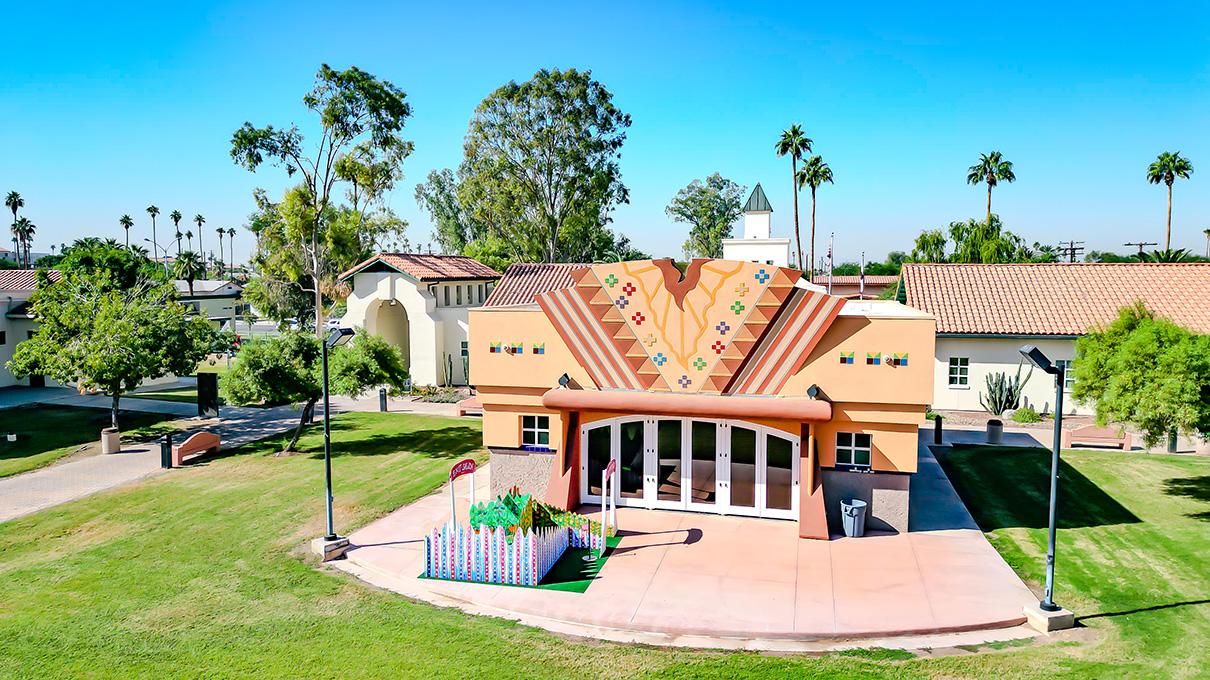Alumni Treasure Trove
Anthropology Professor Seth Mallios has collected dozens of artifacts that tell the story of SDSU's history

Professor Seth Mallios sits in his office awaiting a Fed-Ex delivery he expects will contain one of the most prized possessions of an SDSU alum in San Francisco - a bloody towel. The item represents the cherished memory of an Aztec victory a decade ago.
“It’s a rally towel from 2001 when State beat Fresno State and all the fans stormed the floor of the basketball arena,” the anthropology department chairman explains. “When this guy stormed the court he cut his hand on the railing and he was talking about how much this towel meant to him not only because they were so excited and (chanting) ‘We want Duke (University)! We want Duke!’ and thinking they could conquer the world, but because this guy bled all over the towel. So not only is it an Aztec rally towel, but it’s got real Aztec blood on it, which gets me excited.”
Mallios is excited by many such things these days. He’s writing a book about the history of Montezuma Mesa and gathering artifacts to help tell the tale. Two months ago he issued a call to San Diego State alumni for their personal memorabilia and was stunned by the reaction he received.
Big surprises
“I didn’t think I’d get so many responses,” the amazed professor admits. “I got dozens of emails, probably nearly a hundred. I was thrilled and was surprised not only by the number of responses, but that people had held onto this stuff. If you had told me, ‘You’re going to get a song leader outfit from 1960’ – a vintage outfit! Or - come on - the weathervane from the president’s house?! I never would have believed stuff like that, so that was another big surprise.”
The weathervane to which Mallios refers is a souvenir snatched from the roof of the house once occupied by former San Diego State president Malcolm Love.
“We’ve had some things given to us where people have asked for anonymity, so I won’t go into more detail than ‘that’s the president’s weathervane’ which I think is fantastic.”
Also fantastic is the song leader uniform from 1960.
“The measuring technique to determine the length of the skirt in 1960 was for the female song leaders to get down on their knees and the dress was allowed to be six inches from the ground (or six inches above the knee)” Mallios points out. “Unfortunately, I don’t know too much about costume evolution, but this is vintage. I was thrilled that somebody still had this and I think it’s just amazing!”
Beer steins and beanies
Then there’s the beer stein with a copyright by Eric P. Mihan who, almost 60 years ago, designed the mugs for all the major universities.
“This is really cool because these were made in 1952 and ’53,” says Mallios. “These all had three components: They had the mascot, they had the seal, and then they had the most prominent area of campus. So you get to see this for every one of these campuses across the U.S.
"You can see there’s a typo on it. This says, ‘administrations bullding.’ Now, the person who owns this, he’s convinced that that’s deliberate because ‘bullding’ back in the '50s was a synonym for ‘b.s.’ I’m not sure if it is because there’s no apostrophe for ‘administrations,’ but I love it when there are debates like this.”
Of all the items he has received, the one Mallios had hoped for the most was the 1940s-era black and red reversible felt freshman beanie. In his research he had seen them in yearbooks and the student newspaper, but had never had the opportunity to examine one.
“We were absolutely thrilled to find one of these,” he says. “Seventy years ago when you registered for your classes, you received a beanie and if you were a man you wore it black side up and if you were a woman you wore it red side up. The early beanies we saw from the ’30s were really small. They were almost like little yarmulkes and then they grow with the fashion like everything that evolves.
“The fun thing about this beanie is - think about it - the school moves to Montezuma Mesa in the ’30s. They have all these traditions they’re trying to push on people and it really gets going in the ’30s and ’40s. But then when all the GIs come to school in the late ’40s it stops because you’re really not going to haze somebody who’s just come from the war.”


